At 14.28 on May 12, 2008, the catastophic Sichuan Earthquake (otherwise known as the 'Wenchuan Earthquake') rocked southwest China.
Over 80,000 people were killed or went missing as a result of the 7.9-magnitude earthquake, with another 375,000 sustaining injuries. The devastating quake, which struck approximately 80 kilometers northwest of Chengdu, left an additional 4.8 million people homeless.
It was the strongest earthquake to hit the Middle Kingdom since 1950, and the deadliest since the 1976 Tangshan earthquake, which killed 240,000 people.
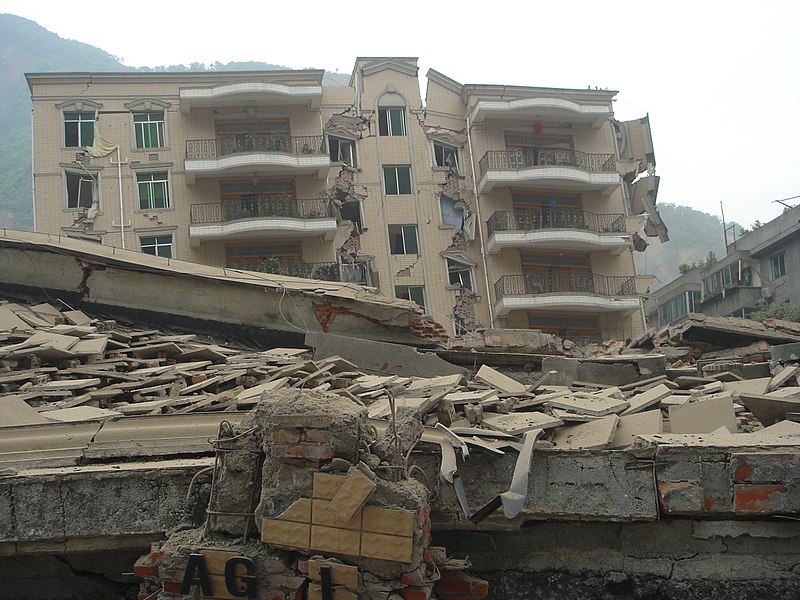
Image via Wikimedia Commons
The natural disaster flattened about four-fifths of the structures in the affected area after just two minutes of shaking, and in some places entire towns and villages were completely destroyed.
Some of the most tragic stories to come out of the earthquake were those of children being crushed due to schools collapsing – the officially reported total killed included 5,300 children, with most of them being students who were attending classes when the quake struck in the mid-afternoon.
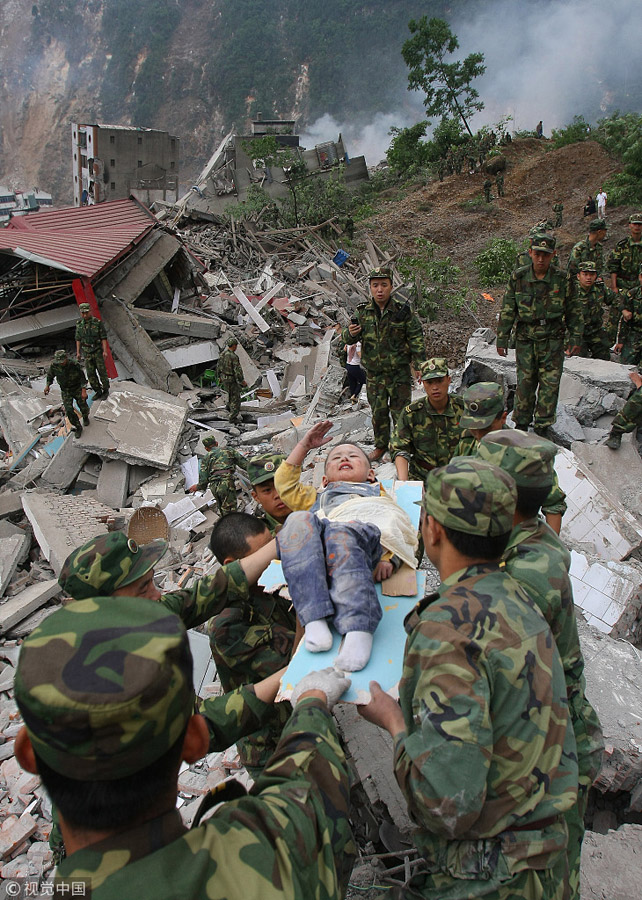
In this image from photographer Yang Weihua taken a day after the deadly May 12, 2008 earthquake, a young boy in Beichuan country salutes rescue workers. Image via China Daily
Image via Wikimedia Commons
Tremors from the earthquake could be felt as far as Shanghai, 1,700 kilometers away from the epicenter.
The sheer magnitude of the disaster called for massive relief efforts, with China issuing a rare request for international aid.
The after effects of the earthquake unfortunately made rescue efforts difficult. Due to the seismic activity, hundreds of dams were destroyed, causing mudslides in the affected area, which proved to be fatal to an estimated 200 relief workers.
The mudslides also caused the damming of rivers and lakes due to falling debris and rocks.
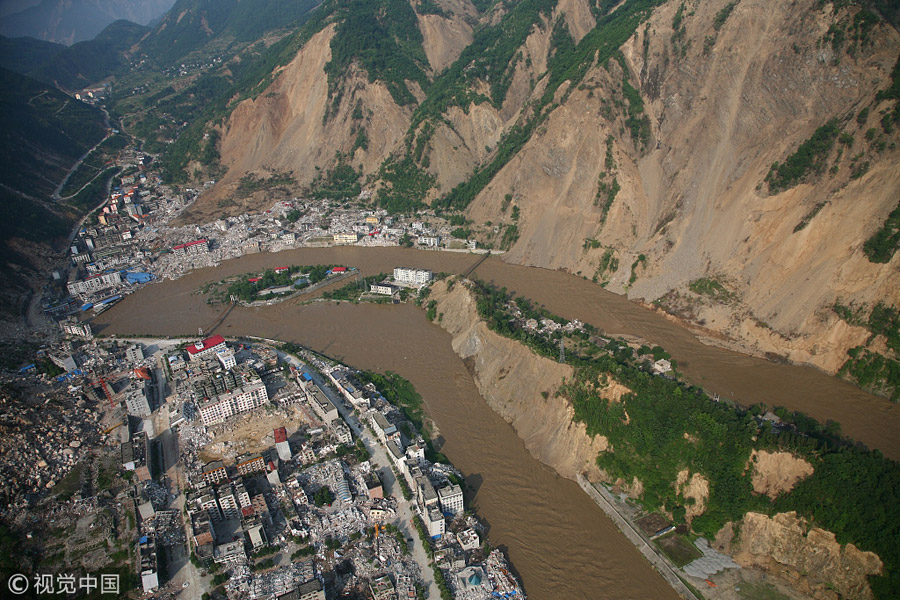
A lake that was formed by a landslide caused by the 2008 earthquake. Image via China Daily
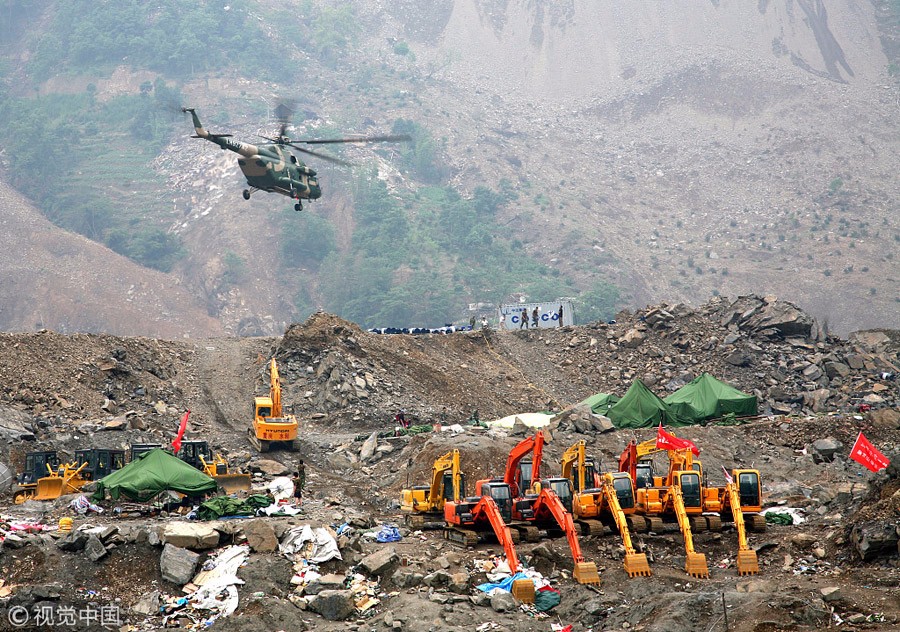
Excavators widen a channel to release water in a newly formed lake in June 2008 following the deadly earthquake. Image via China Daily
These blockages created flooding and made the more remote villages difficult to access without modern rescue equipment, which, coupled with the aftershocks, further hindered the government’s rescue efforts and may have contributed to further fatalities.
The quake was caused by the collision of the Indian-Australian and Eurasian plates, the edges of which run along the Longmenshan Fault (a geological fault is a large fracture in the earth that runs parallel to were two tectonic plates meet – the fracture accounts for the curvature of the earth).
This caused the ground to shear in two places along the fault, thrusting the ground up by about nine meters in some places.
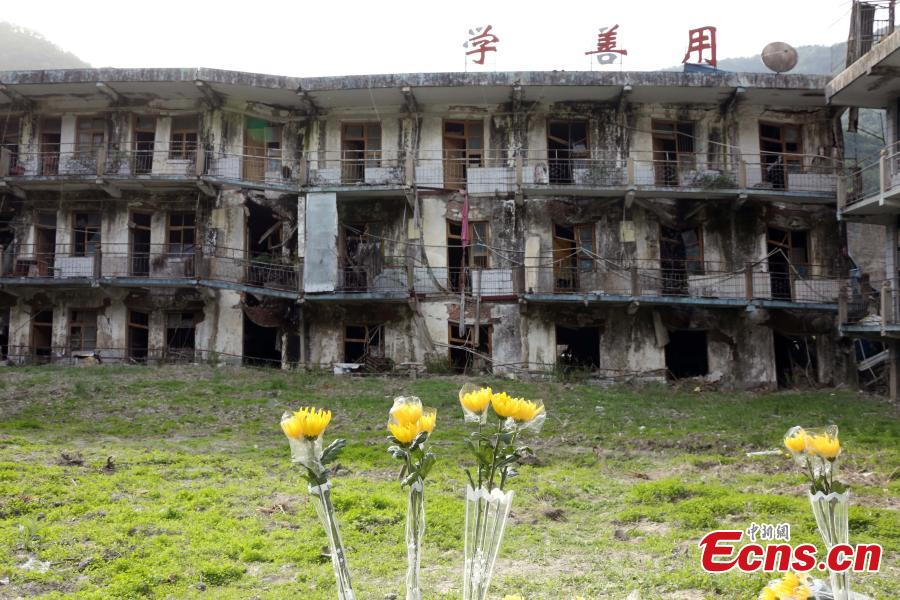
Ruins in Beichuan County. Image via ECNS

Beichuan County. Image via ECNS
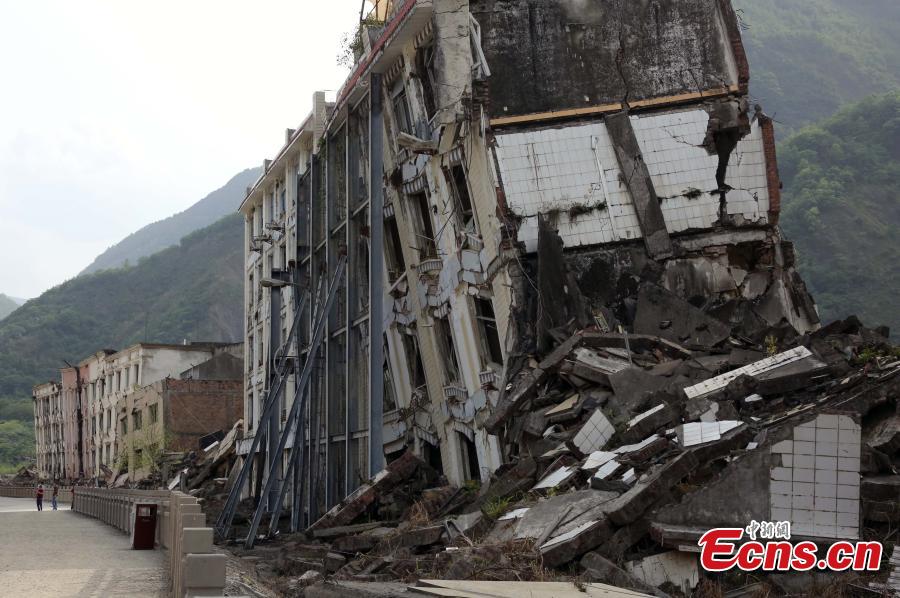
Beichuan County. Image via ECNS
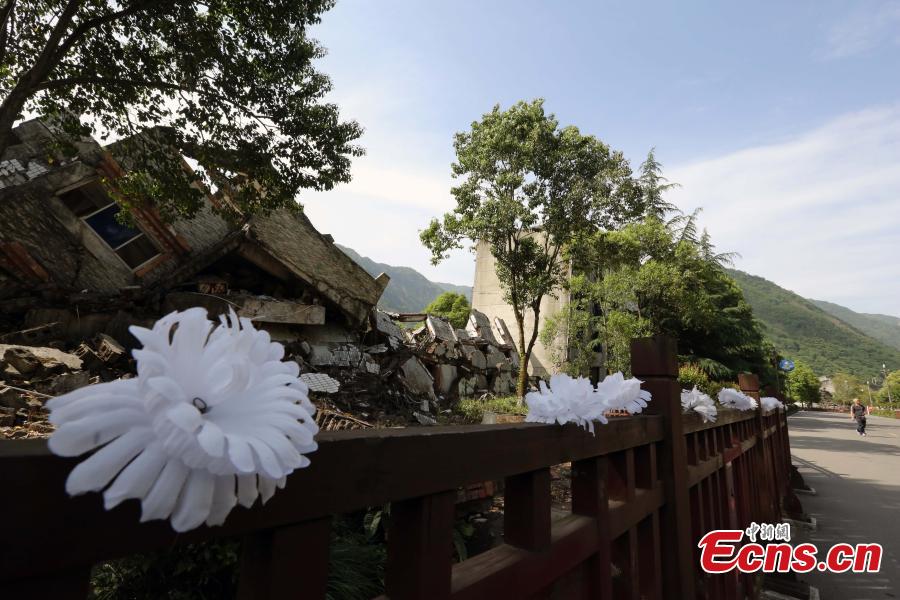
Beichuan County. Image via ECNS
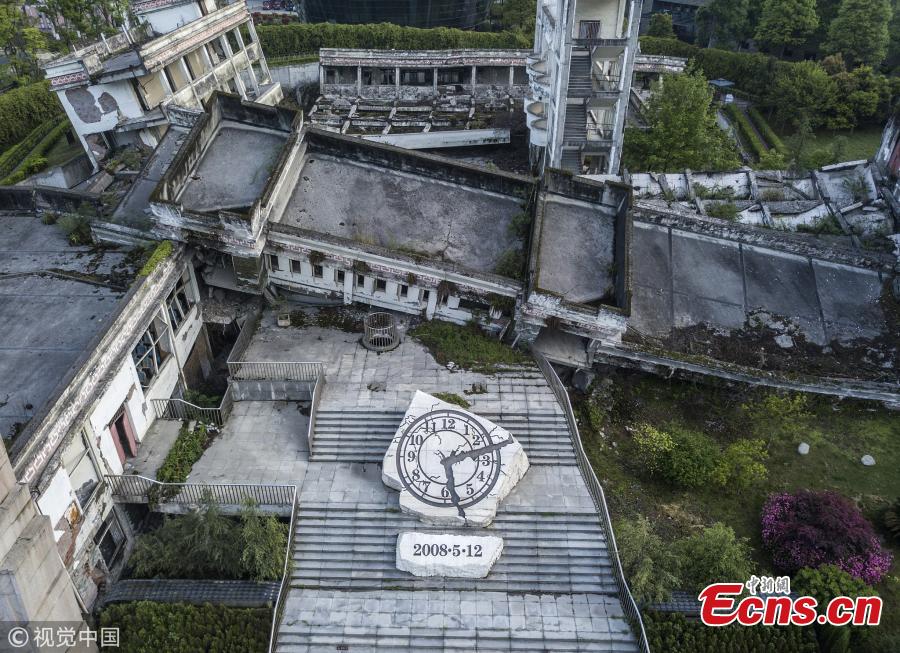
Xuankou Middle School in Yingxiu Town, which was at the epicenter of the deadly quake, remains untouched to this day. Image via ECNS

Xuankou Middle School. Image via ECNS
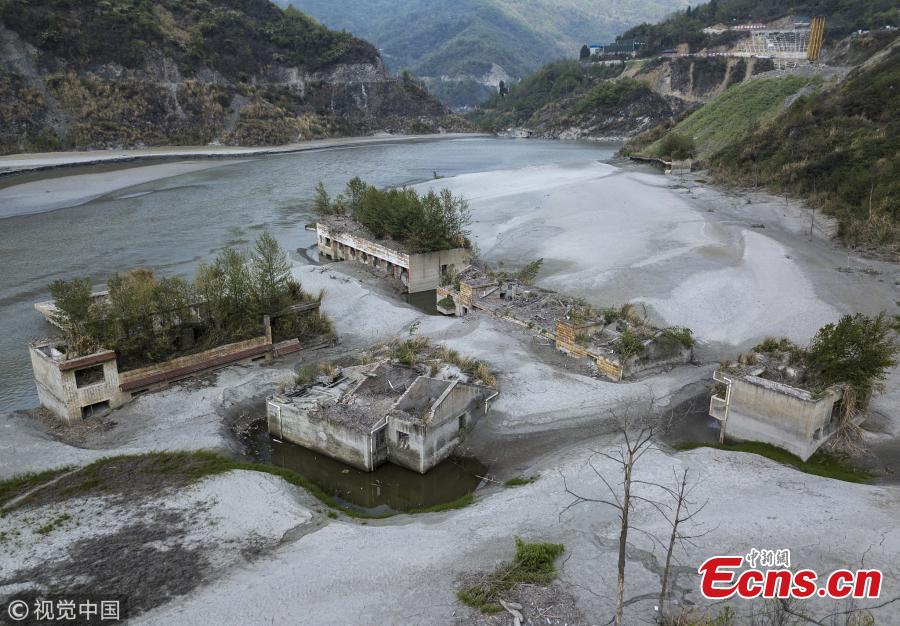
Buildings in Yingxiu Town have remained untouched since 2008. Image via ECNS
Nowadays, some of the destroyed areas remain abandoned, with ruins being preserved as memorials to those who were lost. Other buildings have simply been left for time to reclaim, with bushes and weeds growing over the rubble.
The government has also spent time rebuilding many of the affected towns, with a total of an estimated USD137.5 billion being used in restoration projects.
READ MORE: I Was a Post-Disaster Tourist in Sichuan's Earthquake Villages
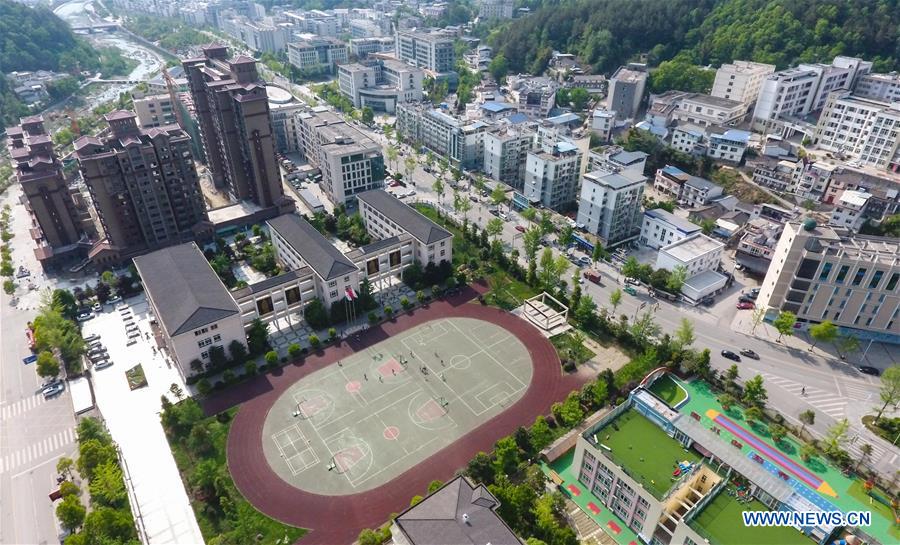
One of the restored towns today. Image via Xinhua
More than a decade on, the affected area still experiences regular seismic activity; five years after the initial 2008 earthquake, a magnitude 6.6 earthquake struck, with the epicenter also being along the Longmenshan Fault. In August 2018, a magnitude 7.0 quake in a mountainous part of Sichuan killed 20 and injured around 500.
However, while these areas experienced a similar level of shaking as the 2008 Sichuan earthquake, there was significantly less damage. This seems to indicate the Chinese government and people are working hard to implement more secure buildings, which will hopefully reduce the number of fatalities in the future.
The government also announced other initiatives, including an earthquake monitoring network that can better predict quakes in areas of high seismic activity, a early quake warning system that can quickly transmit warnings over radio, television and phones and improved search and rescue teams to be in place when disaster strikes.
Image via Wikimedia Commons
Additional contribution by Bridget O'Donnell
For more This Day in History stories, click here.
[Cover image via National Review]
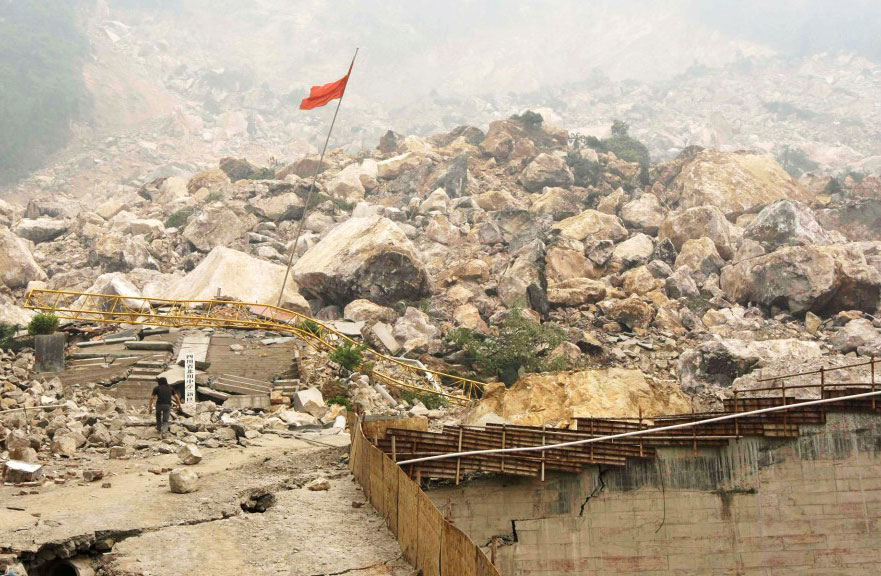




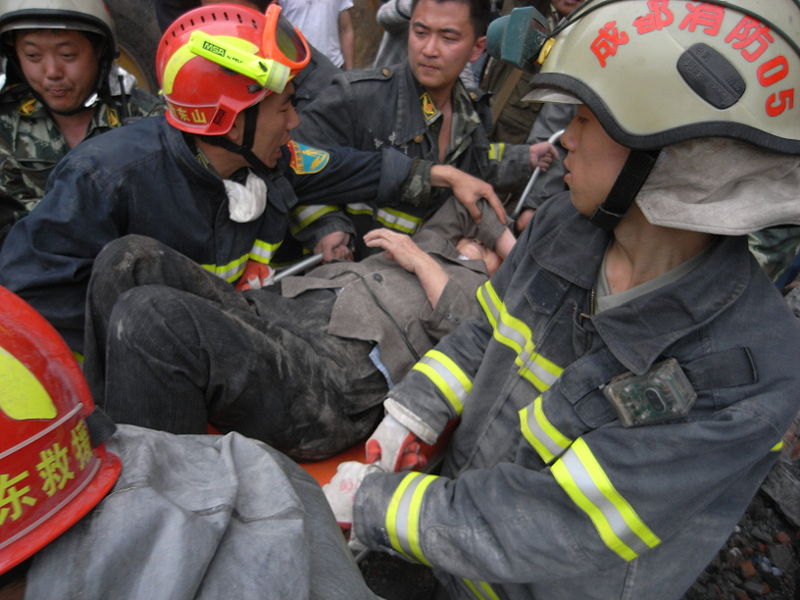


















0 User Comments